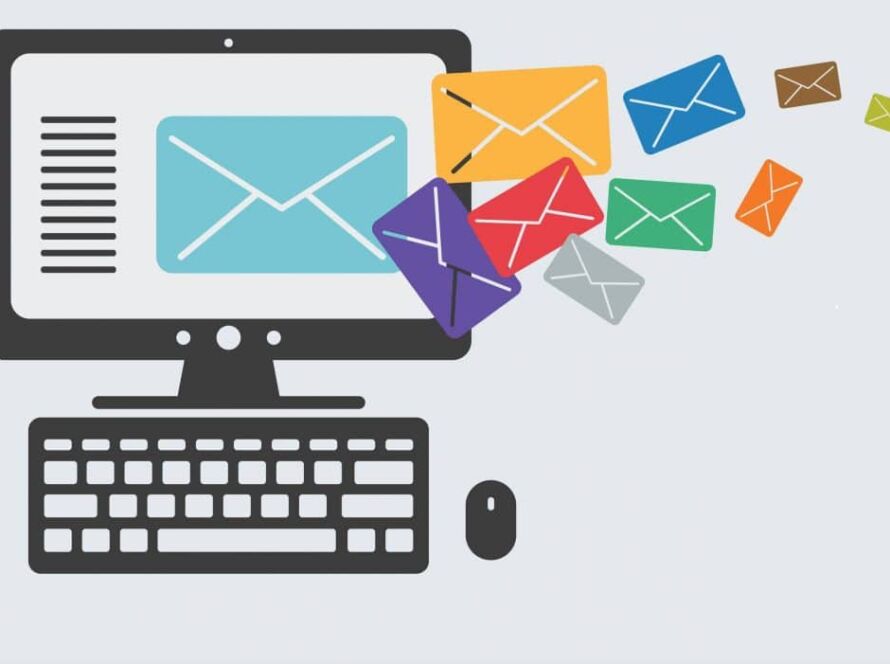For e-commerce websites, life used to be simple. Find a compelling angle: price, variety, size, or novelty – then watch your products fly off the digital shelves. Today’s e-commerce marketing is no longer that simple. In fact, content plays just as much of a role (if not more) than the products themselves.
And because content marketing, not brute competition, is what gets your products in front of consumers, savvy e-commerce companies have had to change their approach to take advantage of the new content-powered economy.
Here’s how you can, too:
Create Measurable Progress with Content Goals
No content marketing effort will sustain itself over the long term without measurable, concrete goals in place. Solid content doesn’t mean peppering your audience with sales notifications, new product releases, and keyword-stuffed descriptions.
It means creating two-way communication that invites customers into your funnel. It means creating content with authority. Content that customers can use to make informed purchase decisions with confidence.
And content goals are the stepping stones to those realizations within your target market. Now, with this being said, keep in mind that content goals aren’t exactly tangible milestones like “write 5 1,000-word pieces a day for publication on our blog”.
Instead, they are more far-reaching. Things like “Illustrate the benefits of the new Widget 5000” or “Discuss how we price custom orders on widgets.” These directly answer customers’ un-asked questions on things like “why should I pay attention to your new product release?” or “How much do you charge for custom widgets? / Why is the price so high?”
These aren’t outright objections, mind you, but rather deep-rooted concerns that your potential buyers aren’t getting answered by your competition. When you’re the first and the best to step in and answer these questions, you’ll have demonstrated that you’re ready to earn their business.
Embrace the Customer Experience
Part of the appeal of content marketing is that, when done right, it ties in directly with the customer experience. This is the experience a user has across every touchpoint of your marketing – from your e-commerce website to your social media to your phone support and everywhere in between. It’s the journey from “mildly interested” to “loyal brand advocate,” and it’s something every serious e-commerce business should strive for.
One of the best ways to do this is to find out what motivates your customers to act. Oftentimes, however, this doesn’t mean simply going out and asking them, as they’ll be reluctant to part with such private information.
Instead, what smart e-commerce companies are doing is building up buyer personas – fictional profiles filled with demographics, hobbies, common objections and even challenges that your customers face when considering your product. Buyer personas let you delve deep into buyer behavior and psychology to find out what makes people buy and what makes them abandon their shopping cart right before checkout.
Cozy Up with Influencers
Not surprisingly, creating all this in-depth content and reaching the right people with it is a tall order to fill. But you don’t have to do it all alone. Influencers, individuals who have already connected with your target audience, can do much of the heavy lifting for you. Here is a voice your audience looks to for advice; someone they trust and rely on.
Imagine how much better your message would be received if it weren’t coming directly from your e-commerce company itself, but rather from a like-minded ally that your audience pays attention to and follows the recommendations of. How much more of an impact would that have on your bottom line?
Learn What Content Resonates with Visitors
Even if you have the recommendations of influencers, a content goal plan and the meatiest customer personas in your industry, your content will still flop unless you know what your visitors really want out of it.
This doesn’t just include writing content to inform, entertain or engage them, but it also means delivering that content in a way that they expect it. For example, expecting to reach a large number of retirees and Baby Boomers through Facebook would have about as much impact as trying to appeal to Millennials through the newspaper.
With that in mind, however, there are several ways to create content in such a way that it positions your e-commerce storefront as an authority. You can craft your content to help increase traffic or conversions – or both, depending on what you need more of.
Creating Content to Increase Traffic
Yes, you can have content that increases traffic to your page as well as helping to spread the word about your products. Certain types of content have an almost magnet-like effect on users. Pieces like comparison content, list-based posts, contests and awards or recognition help people get excited about your products and their role in creating or improving them.
Other types of traffic-increasing content are things like guest-written, crowd-sourced or curated content. These help you create evergreen “Best Of” lists that people will reference, talk about, and most importantly, link to, time and time again.
Creating Content to Increase Conversions
There’s also content that’s created to help improve your conversion rate; that is, the number of qualified visitors who ultimately go on to take the action you want them to take (purchasing, subscribing, etc.) Certain types of content encourage more of the action you want, namely things like How-To guides, product videos, buyer’s guides and other in-depth pieces. These are much more detailed than your typical list post, but also contain the kind of rich, core information your prospects are looking for.
Certain kinds of content, like case studies, may put the spotlight squarely on another customer or business, but make no mistake, they are designed to also position your company as the best value, a leading authority, or a recognized vendor in your own right.
Creating Content Visuals
Content visuals aren’t just the images you use to tell the story. They help illustrate it in a way that words cannot. And because our attention spans are becoming shorter and shorter, we actively look for more “bite-sized” content snacks rather than full-blown theses.
But don’t despair – as this doesn’t mean you have to reinvent the wheel when it comes to creating visually-digestible content. You can repurpose much of your existing content into new formats depending on what platform(s) your audience prefers. Turn a blog post into a slideshow or turn your how-to guide into a podcast or audio book. That big buyer’s guide you wrote? What if it were put into video form or a PDF for later downloading? Those facts and figures you outline in your case study? They could make a great infographic.
Now that you’ve gotten a solid handle on the types of content you’re creating and who you’re creating them for, it’s time to launch it out into the world – but not before you take a few more important steps.
Optimizing Content for Maximum Exposure and Action
You’ve gone to all this effort to make sure your content is as polished and presentable as possible, so now is not the time to short-change your own promotion efforts. This means getting the basics right, as well as taking a few extra steps to make sure every post you make pays off.
Ensure that every piece of content makes proper use of meta keywords and descriptions for proper SEO as well as correct use of headings, internal and external links, images and attribution and so forth. These are like the infrastructure of your post’s visibility, so make sure they count. Add the right kind of visuals to help maximize your post’s shareability on social media. Considering that the most shared posts on Facebook are visual in nature, you’ll want to give your content every possible advantage right out of the gate once you launch.
Don’t forget to check your analytics and find out when your posts are most likely to be viewed. This makes perfect sense when you consider your target audience’s needs before scheduling your post (for example, are they busy mothers? You’ll have better luck posting during normal school hours while the kids are away). Email your list, too, as they’ll definitely want to know when you release new content.
Promoting Your Content to a Wide Audience
Now comes the moment of truth – promoting your content. There are three different distribution channels available to help you make the most of every post. Depending on the one you choose, you’ll have several smaller steps ahead of you to make your content count. They are:
Owned Media: This is content on platforms you control or channels you own. It typically can refer to your own blog, social media or email list. You have a lot of leeway on owned media as to where it’s seen and when.
Earned Media: This is also known as a blogger outreach or influencer outreach. It involves using your relationship(s) with influencers to market your content to their audience (and your audience) for you. There are some tools available which can help with identifying these influencers, but taking the time to approach and build relationships with them is at the core of making earned media work for you.
With earned media, it’s very important that you reference the influencer(s) whose own work you may have used as a springboard for your own content. Not only is it just good business sense, it helps warm them up to your request as well. They’re likely used to getting their things shared and commented on, so be sure to make a name for yourself in their mind, and they’ll be more receptive to your requests as well.
Paid Media: This refers to pay-per-click and related media channels. You don’t own these and may have limited control, but they have a vast reach across many different types of media. In addition to things like pay per click search engines (Google Adwords and such), there’s also remarketing and paid social sponsorships that qualify under paid media.
The important thing to remember with paid media is understanding when people are still in the “just looking” phase and not bidding for keywords that are too expensive or too competitive. While you can cast a broad net to attract these users to your page, you may be paying more than what the keywords are “worth” just to find out they may not be at the point where they’re ready to purchase.
Creating a Content Calendar
A content calendar can help beef up your marketing efforts by leveraging existing exposure. By identifying things like industry events, seasonal events, publication outlets and partnerships, you can make your content go much further than it ever could alone.
Create new content ideas and map them out month after month, identifying trends and capitalizing on industry news or new breakthroughs. Reach out to analysts, trend-spotters, and other key influencers and look for ways to weave your message in so that it ties into points that are new and noteworthy throughout the year.
Wrapping it All Up
You’ve made it this far, and we’ve thrown a lot at you. Fortunately, we’ve condensed this entire content marketing plan into one visually snack-able infographic that leads you through the e-commerce content marketing process from start to finish. It may seem like a lot to go through, especially for every piece of media you create, but knowing that you can recondition and repurpose each piece into something larger over time means your content will continue to pay you back months or even years after you hit Publish.
Have you been able to market your e-commerce site successfully using content marketing? Have you found any particular one of these strategies has worked surprisingly well for you? Are there certain platforms you focus on more than others? We’d love to hear your feedback and invite you to share your unique perspective with us in the comments below. Let us know about your e-commerce content marketing success stories, or areas where you may still be struggling.



